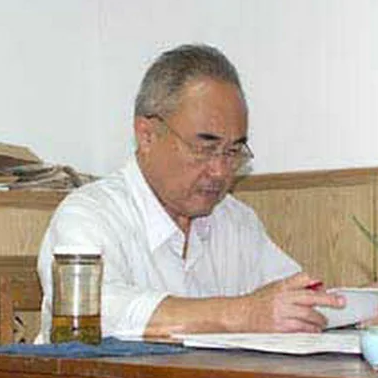Jung Min-jung

Zheng Minzhong, male, Han nationality, styled Congyi, late name Nanguo Qinsou. Born in Beijing in 1923, he was originally from Minhou, Fujian, and sent to Huayang, Sichuan. The first batch of representative inheritors of Guqin art of the national intangible cultural heritage project. He is a member of the National Cultural Relics Appraisal Committee, a member of the China Museums Association, a member of the Chinese Calligraphers Association, and the vice president of the Beijing Guqin Research Association.
Before 1946, he studied at the home school, and temporarily studied inscriptions on tablets in the Han and Wei Dynasties. He also learned painting from Lin Yanbo and Wang Aishi, and learned the piano from Wang Xingdong, Li Yuxing, and Guan Pinghu. In the autumn of 1947, he studied calligraphy and painting from Puxuezhai again.
In the autumn of 1946, he worked in the Palace Museum and has been engaged in the exhibition and research of ancient Chinese artworks for a long time. After 1982, he focused on the study of guqin and ancient inkstone, published more than 30 academic papers on special topics, and participated in many academic seminars at home and abroad.
After being transferred to the laboratory in the mid-1980s, he chose to study the guqin as a major. In the past 20 years, he has published more than 20 qin theories on the production and development of guqin; the dating and identification of guqin; the production and restoration of guqin It has played a role in setting things right. Among them, the article "On the Jinyinping Wenqin of Japan's Zhengcangyuan and my country's Baoqin and Suqin" won the second prize of the Palace Museum's excellent paper. The papers on calligraphy, painting, and ancient inkstones are also mainly contentious, and play the role of setting things right.
He is currently a member of the National Cultural Relics Appraisal Committee, a member of the China Museums Association, a member of the Chinese Calligraphers Association, and the vice president of the Beijing Guqin Research Association.
Now he is a research librarian of the Palace Museum, a member of the Academic Committee of the Palace Museum, and enjoys special government allowances.
In 1953 and 1961, he donated 57 pieces of porcelain and 20 pieces of his own collection to the Palace Museum.
Similar artist
Involving musical instruments
Involved portfolio
Involved news
Popular artists
- 01 bump peng peng peng
- 02 Jiang Ying
- 03 Su Chang
- 04 Zhu Yunqi
- 05 Zhong Xiaotian
 渝公网安备 50010702504639号
渝公网安备 50010702504639号